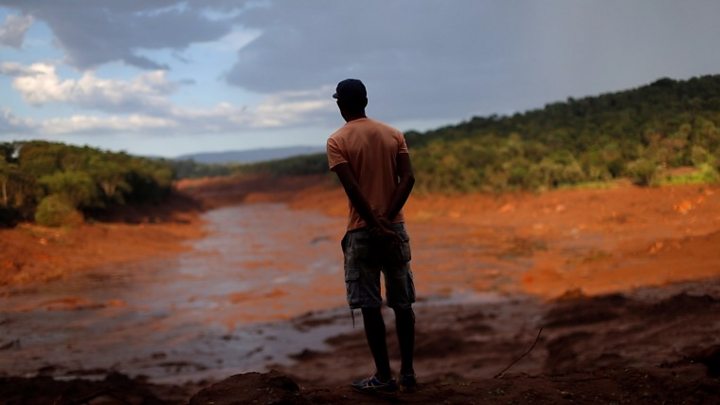[ad_1]

Media playback is unsupported on your device
The collapse of a dam that killed at least 250 people in Brazil in January could have been prevented if its owner had reported defects to authorities, the mining regulator says.
The National Mineral Agency (ANM) said in a statement that mining giant Vale had failed to report warning signs.
A sea of waste from the Feijão dam engulfed a canteen, offices and farms in Brumadinho, in Minas Gerais state.
It was Brazil’s worst industrial accident.
The disaster also raised concerns that other mining dams in Brazil could be at risk of collapse.
“If ANM had been correctly informed it could have taken precautionary measures and forced the company (Vale) to take emergency actions that could have avoided the disaster,” the statement from ANM said.
The regulator’s report, citing internal company documents, detailed several issues that it said Vale should have reported.
The first one was in 2018 when Vale installed horizontal drainage pipes and found sediment in the drainage water.
Read more on the dam collapse:
ANM head Victor Bicca told a news conference that this was a worrying sign that should have been reported immediately.
“The serious fact is that when there is sediment it must be reported. Period. It wasn’t. If it had been communicated, the area would immediately have been submitted to daily inspections,” he said.
“But we didn’t know what was happening.”
Vale now faces more than 20 new fines from the regulator.
In its own statement, Vale said it would analyse the report but could not comment further.
Vale and German safety firm Tüv Süd already face criminal charges over the dam collapse.

Media playback is unsupported on your device
In September, police said both firms had used falsified documents that stated the Feijão dam was stable.
In July a Brazilian judge ordered Vale to pay compensation for all damages caused by the collapse, saying that the company was responsible for fixing all the damages including the economic effects.
The same month, emails emerged that showed Tüv Süd’s own analysis of the dam initially failed to meet official requirements.
The structure that collapsed was a “tailings” dam – an embankment filled with waste product – and decades of waste from the nearby mine had been piled up and grassed over.
Tailings dams are vulnerable to “liquefaction”, when, for various reasons, the solid material begins to act and move like a liquid, making them vulnerable to collapse.
[ad_2]
Source link
